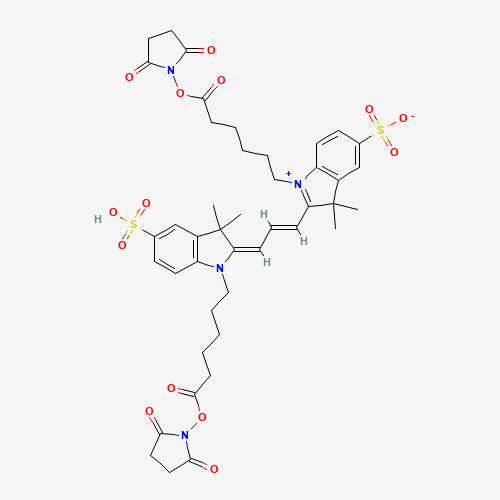Structure and properties of CY3-COOH Cyanine 3
CY3-COOH is a carboxyl-modified derivative of the cyanine dye CY3 ( Cyanine 3 ). Its structure is shown below:
H
|
CH2--CH--CH2--CH2--N+--(CH3)2
|
HO--C--CH=CH--CH=CH--C--C--CH2--COOH
|
CH3
The structure of CY3-COOH is similar to that of CY3, an indigo dye belonging to the family of floral cyanine dyes.CY3-COOH introduces a carboxyl group (-COOH) to the amide group of CY3. This carboxyl group provides some of the special properties and applications of CY3-COOH.
CY3-COOH has the following properties:
1. Fluorescent properties: CY3-COOH is a fluorescent dye that emits fluorescence at the appropriate excitation wavelength. Its emission wavelength is in the range of approximately 570-590 nm.The fluorescence of CY3-COOH may vary in fluorescence intensity and spectral properties in different solvents.
2. Water solubility: The carboxyl group modification of CY3-COOH increases its water solubility, making it easier to apply in biological systems.CY3-COOH is soluble in water and some other polar solvents.
3. Reaction with biomolecules: The carboxyl group of CY3-COOH can react with amino groups, hydroxyl groups and other functional groups to form compounds through covalent bonding. Therefore, CY3-COOH can be used for covalent linkage with biomolecules (e.g., proteins, DNA, etc.) for labeling and visualization of biomolecules.
4. Photochemical properties: CY3-COOH can be photochemically reacted by photoexcitation to produce an excited state. This gives CY3-COOH potential for applications such as phototherapy and light-controlled release.

In conclusion, CY3-COOH is a carboxyl-modified derivative of CY3. Its fluorescent properties, water solubility, reactivity with biomolecules, and photochemical properties make it a potential for a wide range of applications in the fields of biomarkers, biosensing, and light-controlled release.




 渝公网安备 50010902000940号
渝公网安备 50010902000940号